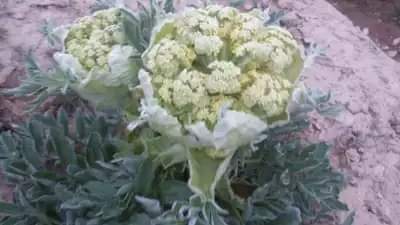Uruzgan is one of the southern provinces of Afghanistan, which is considered the largest producer of poppy after Helmand, but this year the farmers have turned to cultivate asafoetida.
Local officials also say that Uruzgan has suitable land for asafoetida cultivation.
Abdul Wali prepares a field for cultivation using a shovel, where he plants poppies every year during these nights and days.
This year, despite the high price of poppy, Abdul Wali prepares his land not for poppy, but for the cultivation of another plant to cover his annual expenses.

He, whose face shows the hope of reaping the harvest from the newly planted plant, says that he heard that the asafoetida plant is a good alternative to poppy.
He told Radio Killid:’If you look at it, the poppy needs more water all the time, but the asafoetida plant needs to water four times a year and it will give products up to 15 years.
According to Abdul Wali, asafoetida is very affordable, it is easy to cultivate, and does not get any diseases.
Abdul Wali is not the only one experimenting with a new plant on his land, dozens of other farmers say the asafoetida crop is economically viable and can improve their struggling economy.
Mohammad Shafiq is another farmer who planted asafoetida on his land. Although he is happy with the harvest, he is worried about the marketing.
He told Radio Killid about this: Asafoetida plant is coming to Uruzgan for the first time and it is the first time that we grow this plant on our land.

Asafoetida plant is sold at a high price. A kilogram of asafoetida is sold for 10,000 AFN, but the problem is that we don’t have a suitable market to sell asafoetida, so a market must be found for us to sell it.
He says poppy is an addictive plant, but asafoetida is useful because it is used in pharmaceuticals and medicinal purposes.
Agricultural experts consider the asafoetida plant useful and say that if farmers grow this plant professionally and market it, the economic status of farmers will be affected.
Prof. Ahmadullah Ahmadi, a professor at the Faculty of Agriculture of Uruzgan Province, in a conversation with Radio Killid, said that asafoetida needs little water and this plant can improve the economy of people.
He says that asafoetida is a plant that could be cultivated on a small land.
According to him, asafoetida is a new plant and farmers do not know much about its care and training, the government should educate farmers in this field: “Asafoetida is compatible with the climate of Uruzgan and its costs are also low. On the other hand, it needs less water”.

The officials of the Department of Agriculture and Livestock of Uruzgan province are also happy that the farmers of this province have started planting asafoetida.
Qodratullah Hamidi, the press officer of the Department of Agriculture and Livestock, also mentions asafoetida as a useful plant and adds that they have started efforts in this field to develop asafoetida cultivation in Uruzgan province.
He says they will share with the ministry their plans to educate farmers and market asafoetida. Asafoetida cultivation is now developing, people have taken good care of it.
According to him, the Department of Agriculture of Uruzgan has also given a project to the KRO organization to develop this product through training in the field of asafetida cultivation.
Asafoetida is one of the best natural and exporting plants of Afghanistan, which grew naturally in the northern and northeastern provinces of Afghanistan, and was destroyed due to illegal exploitation, but since 2014, the level of sap production of this plant in Afghanistan has increased significantly.
The first-grade asafoetida plant is sold for 85 USD and the second-grade is sold for 70 USD.
Translated by: Shir Ali Jafari
Follow TKG on Twitter & Facebook










